
In our first article on” Getting it Right for Your Child”, we discussed several key points:
- Reading fluency and reading comprehension gaps are often significant — especially for the right brain, kinesthetic or neurodivergent learner, who learns best when they see and experience information. Note, understanding math and anxiety are often issues for these students, too.
- These gaps often widen over time. A student who is 2 years below grade level in reading comprehension in 4th grade may be 3 or 4 years below grade level by the time they enter high school.
- The upside potential is often far greater than parents realize. We have seen students we help improve their reading fluency dramatically and improve their reading comprehension by 2, 3 or even 4 grade levels within months.
- Anxiety and frustration are bigger problems than at any point. In this post pandemic period, more kids are anxious and frustrated, as they missed the foundation skills needed for success. When a child is anxious, they cannot learn; they are constantly doubting what they can do.
In recent discussions with teachers and other professionals and based on our own experience, 4th and 5th graders are especially at great risk, because they missed the key foundational skills needed for success due to school disruptions during COVID, during these critical early years of schooling.
- Parents play a vital role in this equation. The right brain, kinesthetic or neurodivergent learner often has a unique set of strengths and challenges that will require a tailored approach for the child to reach his or her full potential.
In this blog post, we will discuss the benefits of both assessing for a disability and assessing for success. Many parents call us after they have had a psychoeducational assessment done by an outside professional. This is an excellent time to leverage your investment by finding the right intervention to help your child succeed.
We offer a no cost consult you can access by calling us at 561-361-7495
Parents Play a Critical Role in Getting the Right Assessments and Interventions, Especially for the Right Brain, Kinesthetic or Neurodivergent Child
Getting a diagnosis for a “disability” is often critical for several reasons:
- Public and charter schools require a student to have an identified disability before a student can qualify for special education services. This is sometimes hard for parents to hear. They fear their child will be labeled- when in reality, they learn differently- are smart- but the system is not set up to help kids like this, especially when there is often more than one issue that needs to be addressed.
- As a Mom and an Educator, the emotional turmoil my kids experienced was the deciding factor that WE, AS PARENTS, needed to do something different! We needed to take the lead in finding what our kids were good at as well as find the professionals that understood and connected with them. Just getting a person that had specific training in a specific kind of program did not work. WE HEAR THIS ALL THE TIME FROM PARENTS. It is vital to understand the whole child and work together as a team.
- Voucher programs, like the Florida Empowerment Scholarship for Unique Abilities, require a student to have a specific qualifying disability before a private or homeschool child can qualify for this program that can be worth $10000 or more for a student per year.
- All schools require a qualifying disability to get accommodations. We can help you understand the process and how to best maneuver through it to get the help your child needs. It is important to remember that schools cannot always handle multiple issues: especially processing issues.
Too often schools delay the evaluation process. They frequently say they must complete the Response to Intervention (RTI) or Multi-Tiered System of Supports (MTSS) process before they will evaluate a child. Here is a link to a blog post that discusses how RTI cannot be used to delay or deny an evaluation and a sample letter to expedite the process.
Our single biggest mistake with our own kids was not recognizing that they were both right brain, kinesthetic and neurodivergent learners who learned best when they saw and experienced information. Too often assessments do not recognize these strengths. The good news is that more and more private psychoeducational evaluations are identifying these strengths.
The three reasons it is important to identify if your child is a right brain, kinesthetic or neurodivergent learner are that these students::
- Often struggle for years, because their strengths are not leveraged
- Can often make far greater gains, when their strengths are leveraged
- It may make you a far more effective coach and advocate for your child
To help you understand if your child is a right brain, kinesthetic or neurodivergent learner, download our screening tool. We recommend you complete this with your child — some of their answers may surprise you.
Discovering your child is a right brain, kinesthetic or neurodivergent learner is often the critical first step to unlock your child’s potential. If you find your child is a right brain, kinesthetic or neurodivergent child who learns differently and you want to discuss a strength-based approach to help your child succeed in months, give us a call at 561-361-7495
Common Challenges for Right Brain, Kinesthetic or Neurodivgent Learners
The neurodivergent learner often has challenges with executive function issues, dyslexia, auditory/visual processing difficulties and/or anxiety.
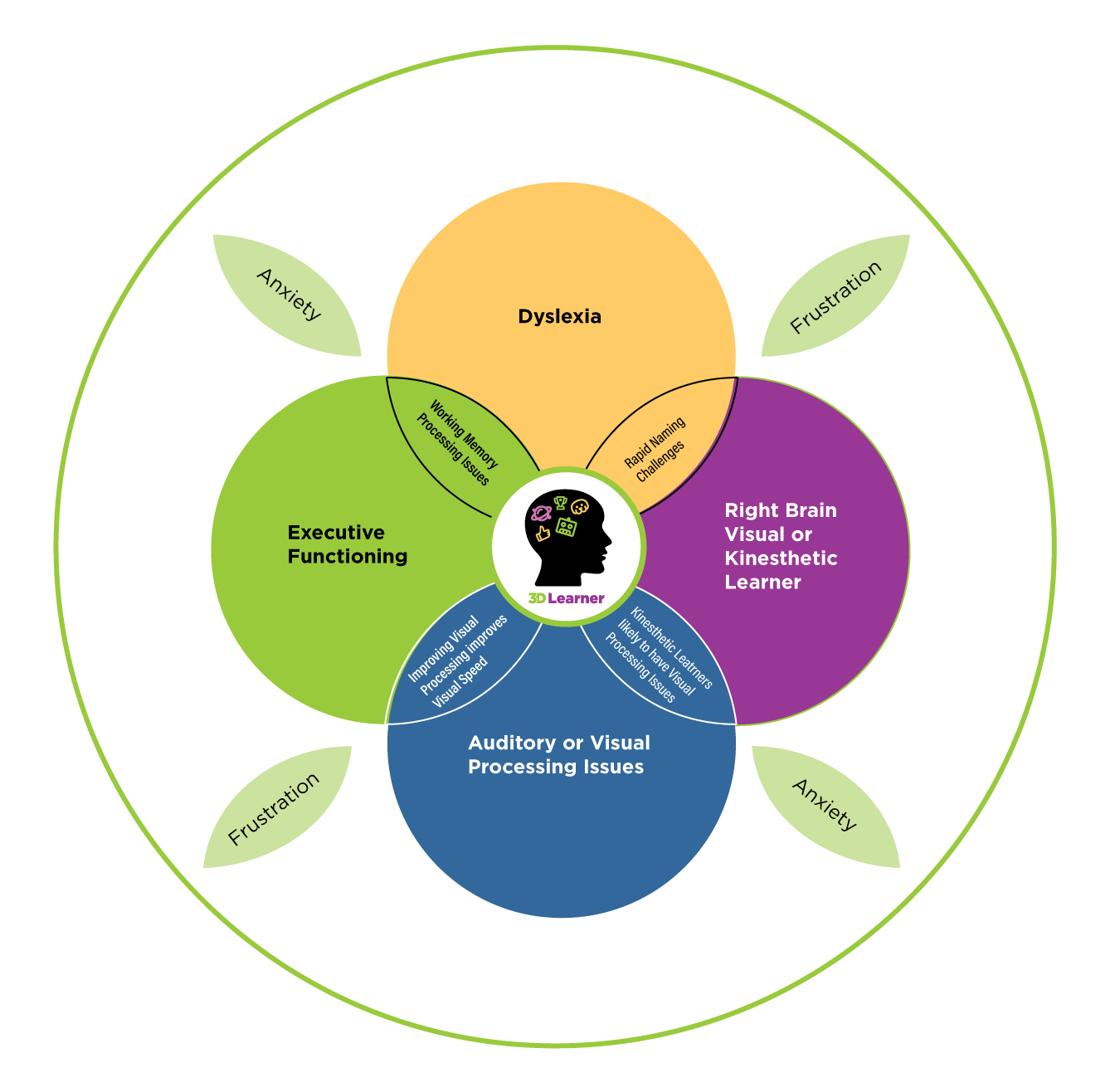 The right assessment can identify specific strengths and cognitive weaknesses
The right assessment can identify specific strengths and cognitive weaknesses
allowing for tailored interventions and support.
For individuals with executive function challenges, an assessment may include tasks that evaluate working memory, processing speed, planning and attention. This can help educators and support professionals understand the specific areas where the individual may need assistance. We use the Mindprint Assessment ® developed by the University of Pennsylvania that identifies executive function strengths and challenges.
For 25 years, we have used the Interactive Metronome ® to assess and address attention issues. This assessment often allows both parents to see the attention challenge in action. The Interactive Metronome is an excellent tool to improve attention and it also reduces impulsivity and hyperactivity and improves handwriting, sports performance and math and reading fluency.
At 3D Learner, we use the Core Assessment from the UFLI ® program to assess for dyslexia and identify specific strengths and challenges. This program was developed by the University of Florida Literacy Institute and was based on the Orton Gillingham model. This assessment allows us to tailor a treatment to the specific issues a child has.
In the case of auditory or visual processing issues, assessments may focus on tasks that assess how well an individual processes and interprets auditory or visual information. Understanding these challenges can guide the development of strategies and accommodations to support learning. We use a Visagraph ® that shows how the student’s eyes track when reading. Here is a link to a video that shows how a student’s eyes tracked before and after the intervention.
The 3D Learner Assessment Results in a Tailored Solution
At 3D Learner, our goal is to help a student to achieve significant gains in months. All the tools we use have proven to be valuable in tailoring a solution to meet a student’s needs. After we do an assessment, we then review the results and if appropriate agree on specific goals and a plan to help your child to make significant gains in months. This works
especially well for the right brain, kinesthetic or neurodivergent child who learns differently, Note, we can also tailor a program for students with executive function, attention, visual processing and/or math challenges.
We offer a no cost consult you can access by calling us at 561-361-7495
Note, the right brain, kinesthetic or neurodivergent child often has dyslexia, ADHD and other executive function challenges. What is missing is that these students often learn differently and have visual processing issues. We strongly recommend leveraging these two tools to screen to see if your child:
Again, we recommend doing these assessments with your child, as their answers may surprise you.
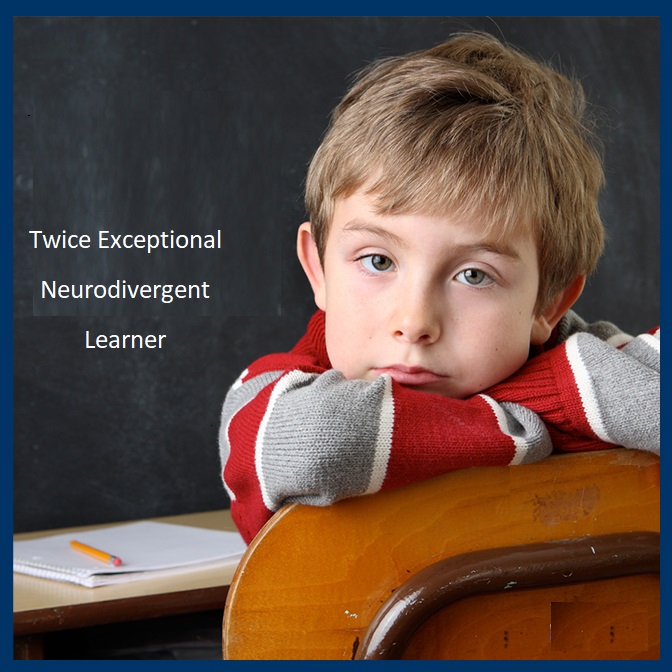
(Call 3D Learner at 561-361-7495 to put your Twice Exceptional Student on Their Pathway to Success)
“Twice exceptional” (2e) students refer to individuals who are both intellectually gifted or talented and may be neurodivergent learners with related challenges. This combination can present unique challenges and strengths in their learning experience. Twice exceptional neurodivergent learners may include those with conditions such as Executive Function issues, dyslexia, ADHD, autism spectrum disorder, or other learning disabilities.
I am Mira Halpert. I have my Master’s in Teaching the Gifted and Talented from the University of Michigan. I also have two twice exceptional children. After years of frustration with dyslexia treatments, learning centers and reading programs, I discovered both my kids were right brain kinesthetic learners. With the 3D Learner Program I developed, my daughter was able to improve her reading comprehension 4.2 grade levels in 7 months, improve her GPA from a 2.7 to a 4.4 and later earn her Master’s in Education from the University of Florida. My son improved his reading scores in elementary school, so that no more school remediation was needed, and he was able to participate in the highly gifted math program.
Over the last 26 years, 3D Learner has helped many twice exceptional students to succeed. Two examples include:
A student whose parents were told not to even apply to a rigorous college prep school, because if he got in he would not succeed. With our help, he was accepted by the school, became the valedictorian and later graduated from MIT.
While another student could solve high level math problems and was incredibly creative, he really struggled with the basics. We were able to improve his foundational skills and his confidence. He was able to succeed in school and is now thriving at the University of Chicago.
5 Things We Have Come to Learn About Twice Exceptional Neurodivergent Learners
1- Most of them are right brain kinesthetic learners, who learn best when they see and experience information
2- Many have significant executive function challenges. Some with working memory and processing speed scores that are far below what their intelligence potential is (these scores often impact their IQ score!).
3- Visual processing issues are quite common. They may have good peripheral vision, but they often skip words and lines when reading and make what appear to be “stupid” mistakes when doing math problems because their eyes do not work together.
4- Their academic performance is often far below their potential. In some cases, dyslexia, dysgraphia or other conditions may have them performing below grade level. In other cases, they may be performing at or above grade level, but they have the potential to do far better than that with the right help.
5- Schools or traditional programs often do not result in significant gains. The twice exceptional neurodivergent learner can benefit most from a program that plays to their strengths, identifies and addresses their challenges and boosts their self-esteem,
As the mom of the student who went to MIT said, “You changed his attitude and that was 90 percent of the battle”.
How 3D Learner Can Help Put Your Twice Exceptional Child on Their Pathway to Success
As parents, we wish we had access to both the right assessment and help for our daughter earlier in her life. To help parents, we are offering three ways to learn more:
1- Sign up for our Parents, Put Your Twice Exceptional Child on Their Pathway from Stress to Outrageous Success Webinar this Thursday evening January 11th at 9 pm.
Sign up and if you cannot make it, we will send you a replay.
2- Download our strengths and challenges infographic and get our series of posts on Getting It Right for Your Twice Exceptional Child.
3- Call us at 561-361-7495 and we can discuss how you can make the difference. If you want, we can also share how we Assess The Twice Exceptional Neurodivergent Child and how we help the Twice Exceptional Neurodivergent Child to Succeed with our 3D Learner Program ®.

Right brain kinesthetic learners face huge risks this school year. Many teachers will be new, schools may be understaffed, and special educators may be overwhelmed. In this blog, we will discuss:
– How to expedite a special education evaluation
– Why and how to improve an IEP
– Why more may be necessary to have your child reach his or her potential.
Note, many public and charter schools have invested in dyslexia treatments. This will help student’s reading fluency, but it often does not significantly improve reading comprehension.
We have had parents who asked their child’s school to evaluate their child for special education services. We have heard many excuses, with the most common being, we need to complete the RTI or Response to Intervention Process first — some schools now refer to this as MTSS, or Multi-tiered System of Support.
This is not acceptable. Back in 2011, Dr. Melody Musgrove, the Federal Director of the Office of Special Education Programs, developed a policy that “RTI Cannot Be Used to Delay or Deny an Evaluation”. Click on this link and you will get a more in-depth discussion of this issue, a copy of Dr. Musgrove’s letter. RTI Cannot Be Used to Delay or Deny an Evaluation “. Here is a link to a sample letter you can tailor to your situation. We have used this hundreds of times and it works virtually every time. Mary used this note and made sure to give her informed consent for an evaluation. It was approved 1 week later, the evaluation was completed, and an IEP was developed within 60 days. It is doable.
Most Individualized Education Plans or IEPs we read anger us. There has been a trend to focus on reading fluency, how well a student reads out loud, and even when there are reading comprehension goals, they rarely close the gap.
Let’s take the case of Alex. He was a 6th grader. His IEP said he was reading at the 5th grade level. His homework, which should have been taking an hour, was now taking 3 hours and sometimes more.
When we assessed his reading comprehension, we found his reading comprehension was at the 3rd grade level. For comprehension, his goal was to answer who, what, where, why and how questions correctly 4 out of 5 times at his independent reading level.
Mom asked for an interim IEP meeting and asked the school to evaluate his reading fluency and his reading comprehension. The school assessment showed his reading fluency and reading comprehension were at the 5th and 3rd grade levels respectively. Mom got an interim IEP and they adjusted his reading comprehension goal to make 1.5 grade level improvement in a year.
For The Right Brain Kinesthetic Learner, Schools Rarely Address 5 Key Issues
While reading fluency has gotten a great deal of attention with the focus on dyslexia, 3 issues that are often not addressed in a comprehensive way include:
- Reading comprehension. Note, if a student is 3 years below grade level and over the next year they improve their reading comprehension 1.5 grade levels, they will still be 2.5 years below grade level.
- Vocabulary. The right brain kinesthetic learner often does not master vocabulary the way schools teach. Looking up the definition, writing the word and using flash cards to master the words rarely helps the right brain kinesthetic learner.
- Executive function issues are often identified but not addressed. We have seen students who have IEPs for years where.
- Attention continues to be a major issue
- They have an excellent visual memory, but have great difficulty remembering what they hear or read
- They read very slowly
- Visual processing issues often get worse as the words get smaller. This may result in skipping words and lines when reading, making careless mistakes in math and having difficulty copying off the board.
- Too often the right brain kinesthetic learners are both frustrated and anxious.
At 3D Learner, our goals often include:
- Targeted efforts to improve reading fluency, based on the specific needs of a student.
- Improving reading comprehension by 2, 3 and even 4 grade levels within 4 to 6 months.
- Significantly improving vocabulary, first with a focus on the small words that often confuse a right brain kinesthetic learner.
- Identifying and addressing the relevant executive function and/or visual processing issues.
- Lowering anxiety and frustration, while boosting self-confidence.
If we can help in any way, call us at 561-361-7495 or click here to schedule a conversation.
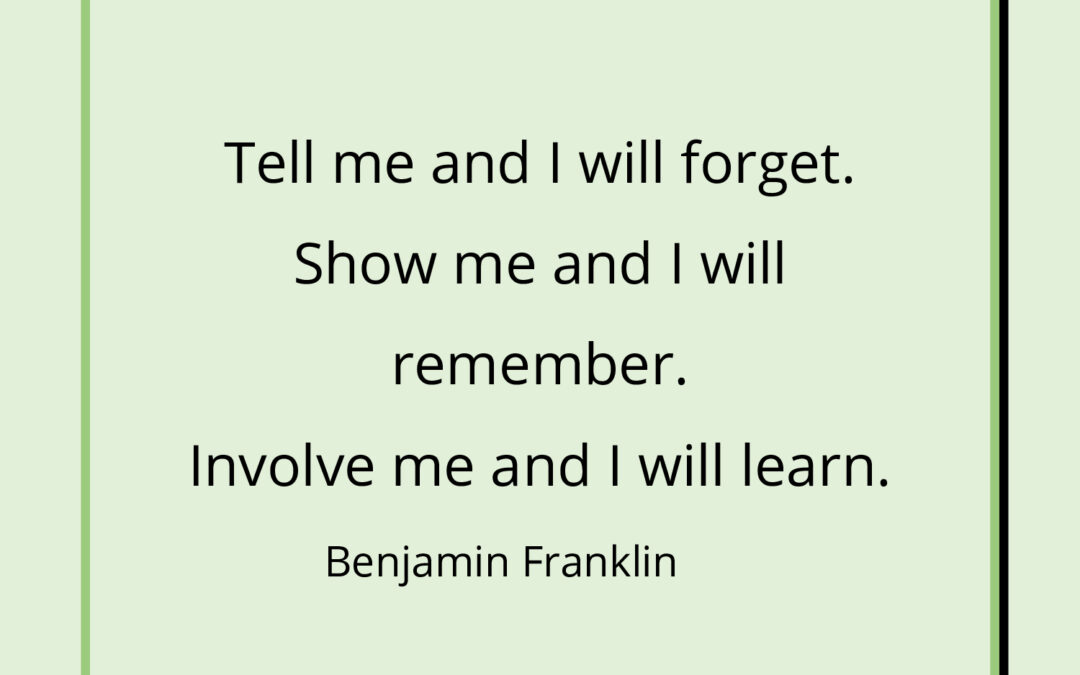
Parenting a right brain kinesthetic learner can be rewarding and incredibly frustrating. We lived through years of frustration, before we realized our daughter was a right brain kinesthetic learner who could do far better with a hands-on and engaging learning process I developed. We have helped thousands of other right brain kinesthetic learners to be far more successful than even their parents thought possible. Our assessment process is designed to both identify your child’s learning style, their strengths and their challenges and their present level of performance – especially for reading fluency and reading comprehension. After our assessment, we then discuss with parents their child’s unique profile, and what we think is possible with a tailored program for your child.
We start with four key thoughts:
- Probably 75 to 85 percent of the smart struggling students are a right brain kinesthetic learner who can do far better when they are taught to their strengths
- Too often assessments focus on one area or the student’s challenges. We have found there is tremendous value in identifying the right brain kinesthetic learner and in identifying whether they have a visual processing issue, executive function issues and/or dyslexia. We also know that reading fluency is used as a barometer of reading skill. We believe it is critical to assess for both reading fluency and reading comprehension.
- Informed, empowered and proactive parents can and often do make the difference.
- Comprehensive assessment can help you understand your child’s strengths, challenges and how you can make the difference.
Note, the 3D Learner Assessment can be completed live in either our Coral Springs, Florida, or Durham, NC locations or via zoom.
If you would like to discuss your specific situation and whether your child might be a right brain kinesthetic learner, you can either:
– Call us at 561-361-7495 or click on
– Schedule a conversation to find a mutually agreeable time
Most of our students are bright right brain kinesthetic learners, who learn best when they see and experience information. These students often:
- Are a lot smarter than present results would indicate
- Benefit from special education and tutoring, which are both helpful, but rarely help the student to reach his or her full potential
- Have some combination of visual processing, auditory processing and/or executive function challenges
- Have dyslexia, but not always. About 33% of our students have dyslexia.
- Can make far greater progress within months if their parents invest in a program that:
- Leverages their strengths and engages them
- Identifies and addresses their challenges
- Has a clear understanding of the present level of performance on key items.
- Is tailored for their child. Every child is unique, and their learning style plays a crucial role in shaping their educational journey. Among the different learning styles, right brain kinesthetic learners stand out as individuals who absorb information best through hands-on experiences and visual aids. In this article, we’ll explore why it’s essential to assess the strengths and challenges of right brain kinesthetic learners, particularly concerning visual processing issues, executive function issues, and dyslexia. By understanding their learning profile, we can design a tailored program that nurtures their abilities for a successful learning experience.
Unraveling the Right Brain Kinesthetic Learner
The right brain kinesthetic learner is characterized by a preference for tactile experiences, physical movement, and visual learning. These learners thrive in an interactive environment, where they can touch, explore, and manipulate objects to understand concepts better. Identifying this learning style ASAP can significantly impact a child’s educational progress. Note, we did not get it right until 11th grade. It did help our daughter to improve her reading comprehension 4.2 grade levels in 7 months and improve her GPA from a 2.7 to a 4.4. Note, the earlier the better, but it is never too late.
The Power of Assessing Strengths
Assessing a right brain kinesthetic learner’s strengths is the first step toward unlocking their potential. You want to identify areas where the child excels. Whether it’s artistic abilities, strong spatial awareness, or exceptional hand-eye coordination, recognizing these strengths can pave the way for a personalized learning approach. The questions we ask and the Structure of Intellect Assessment ® we use helps us to identify how your child learns best. A Boca Raton Principal commented, “I really liked the Structure of Intellect Assessment; why did we stop using it?”. Her special education specialist said that the government requires us to label a child and the SOI Assessment does not label a child. The SOI helps to tailor a program to meet the child’s needs, which is why 3D Learner uses it.
Understanding Visual Processing Issues
Visual processing issues can affect a right brain kinesthetic learner’s ability to comprehend visual information efficiently. These learners may struggle with tasks that involve reading, interpreting diagrams, or following instructions with visual cues. Identifying and addressing visual processing challenges early can lead to targeted interventions and improved learning outcomes. We use a Visagraph to show how a student’s eyes track. Here is a video that shows a student’s tracking before and after our program. We find a significant visual processing issue in close to 70 percent of our students.
Navigating Executive Function Issues
Executive function issues can pose additional obstacles for right brain kinesthetic learners. These cognitive processes are responsible for organization, time management, and impulse control. When executive functions are weak, students may face difficulties in planning, initiating tasks, and staying focused. Implementing strategies to bolster executive functions can support the learner in managing academic responsibilities effectively. Note, we use the Mindprint Assessment ® developed by the University of Pennsylvania to assess Executive Function Skills for students reading at the 2nd grade level or higher. We also use the Interactive Metronome ® to assess for attention. This is an excellent tool to show an attention issue, and it is very effective at improving attention.
The Impact of Dyslexia
Dyslexia is a learning disability that affects reading and language processing. For right brain kinesthetic learners with dyslexia, traditional reading approaches may not yield the desired results. Recognizing the presence of dyslexia is vital for providing appropriate accommodations, such as alternative reading methods, assistive technologies, and specialized tutoring. We use the CORE Assessment, which is part of the University of Florida’s UFLI Program ® we are certified to provide.
Designing a Program for Success
By acknowledging the strengths, visual processing issues, executive function issues, and dyslexia in a right brain kinesthetic learner, parents and educators can design a comprehensive program tailored to their specific needs. Here are some strategies to consider:
- Incorporate hands-on activities and visual aids into lessons to enhance learning engagement.
- Use technology and interactive learning tools to support comprehension and retention.
- Provide a structured and organized learning environment to address executive function challenges.
- Seek support from educators, specialists, and support groups to develop targeted interventions for dyslexia.
The Value of Assessing for Success
Recognizing and understanding the learning style of a right brain kinesthetic learner is crucial for their educational success. By assessing their strengths, visual processing issues, executive function issues, and dyslexia, parents and our team can create a personalized program that nurtures their unique abilities and helps overcome challenges. Through a tailored approach, we can empower your child to thrive academically and develop a lifelong love for learning.
Note, the 3D Learner Assessment can be done live in either our Coral Springs, Florida, or Durham, NC locations or done via zoom.
If you would like to discuss your specific situation and whether your child might be a right brain kinesthetic learner, you can either:
– Call us at 561-361-7495 or click on
– Schedule a conversation to find a mutually agreeable time
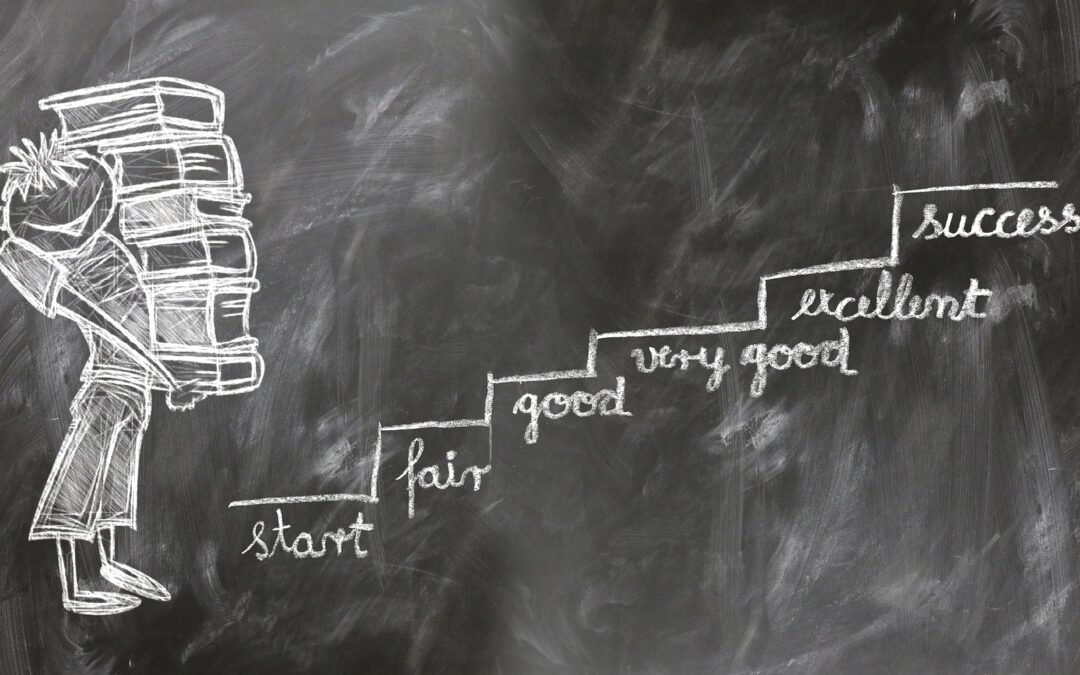
(Strength based training and strength based parenting works for these students)
We focus on how parents can take charge and help your right brain kinesthetic learner succeed. Note, most smart struggling students are right brain kinesthetic learners, who learn best when they see and experience information. When we were told our 8th grade daughter was not college material, I became a mom on a mission. I leveraged my educational and parenting skills and developed what has become the 3D Learner Program ®. With the program, she was able to improve:
- Her reading comprehension 4.2 grade levels in 7 months
- Her Grade Point Average from a 2.7 to a 4.4
- Chances for success. She got her Master’s in Education from the University of Florida. Next year will be her 19th year of teaching and in May 2024 she should be receiving her Doctorate in Education from the University of Florida.
Many of our students are bright right brain kinesthetic learners, who often struggle with:
- Reading comprehension — just this year we have had 6th and 7th graders who were 3, 4 and even 5 years below grade level
- Reading speed — too often students read so slowly that it is hard to sustain attention
- Math word problems
- Putting their thoughts on paper
- Being in classes with kids who are not motivated
For the purposes of this blog post, we will define success for these students as:
- Being on grade level for reading speed
- Reading comprehension two, three or four grade levels higher than their present level
- Being able to get a B or better in math, learn how to check their work and start to like math
- Both mastering math facts and being good at math word problems
- Writing at least at grade level
- Being able to do their homework more independently in much less time
- Now being placed in advanced or gifted classes, where they are far more engaged
- Being proud of their success
Here is a classic case:
The parents had invested $34000 in a competitors’ program and their 5th grade daughter’s reading comprehension was at the 1st grade level, she was a slow reader, and her homework was taking 2.5 hours or longer. She came across an article that asked
- Does your child remember places visited, even from years ago?
- Does your child learn best when he or she sees and experiences information?
- Is your child a lot smarter than her present level of reading comprehension would indicate?
The mom was an action taker. She called us from Texas and wanted to know more. We did a remote assessment that showed her reading comprehension was at the 1st grade level, her reading speed was 115 words per minute and she was a right brain kinesthetic learner. Her parents brought her to Florida for an intensive week of training.
6 months later, she had improved as follows:
- Her reading comprehension was now at the 5th grade level
- Her reading speed was 229 words per minute, virtually doubling where it had been
- Homework time had decreased from 2.5 hours to 1.25 hours and her mother’s time helping her had decreased from 2.5 hours to 15 minutes
- She was now doing well in school and was being recommended for some advance classes in 6th grade — where she did very well
Note, in 2023 we had had many local successes and we had had successes with students from the State of Washington and Arizona.
If you would like to discuss how to put your child on their
Pathway to Success, call us at 561-361-7495
What Are The Common Strengths and Challenges for The Smart Struggling Student
The bright right brain kinesthetic learner often has 3, 4 or 5 of the following strengths and challenges
They often:
- Learn differently and are right brain kinesthetic learners
- Have auditory and/or visual processing issues
- Have one or more executive function challenges (attention, working memory and/or processing speed)
- Have a learning disability or dyslexia
- Are frustrated and/or anxious
Note, the strengths of the right brain kinesthetic learner are rarely identified or capitalized on.

Bright Right Brain Kinesthetic Learners Benefit When One Capitalizes on Their Strengths,
while Identifying and Addressing the Relevant Issues
This Often Requires The Parents to Take Charge
Is your child a bright right brain kinesthetic learner?
- Does your child remember places visited, even from years ago?
- Does your child learn best when he or she sees and experiences information?
- Is your child a lot smarter than present results would indicate?
For a more comprehensive screening tool, download our “Is my child a right brain kinesthetic learner”.
If your child is a right brain kinesthetic learner, you play a pivotal role. Too many of these kids are identified by their challenges. These could include dyslexia, executive function issues, auditory or visual processing and/or anxiety and frustration. We have been there with two of our four kids. Over the last 26 years we have helped thousands of kids like this succeed with a process that starts by helping parents to be an informed, empowered and proactive parent.
We FRAME this differently than most. Specifically:
– Frustration comes with the territory. We encourage you to embrace the frustration and to commit to helping your child to be all they can be. If your child is a right brain kinesthetic learner, there is a good chance that when you leverage their strengths, identify and address their challenges, and leverage their desire to succeed, success is much more likely to follow.
– Reject the status quo and low expectations. Too often we have heard, parents being told that one cannot expect significant gains within a year. Two key points:
- We are seeing many kids whose reading comprehension is far below grade level. This chart shows how often students in special education fall far below grade level
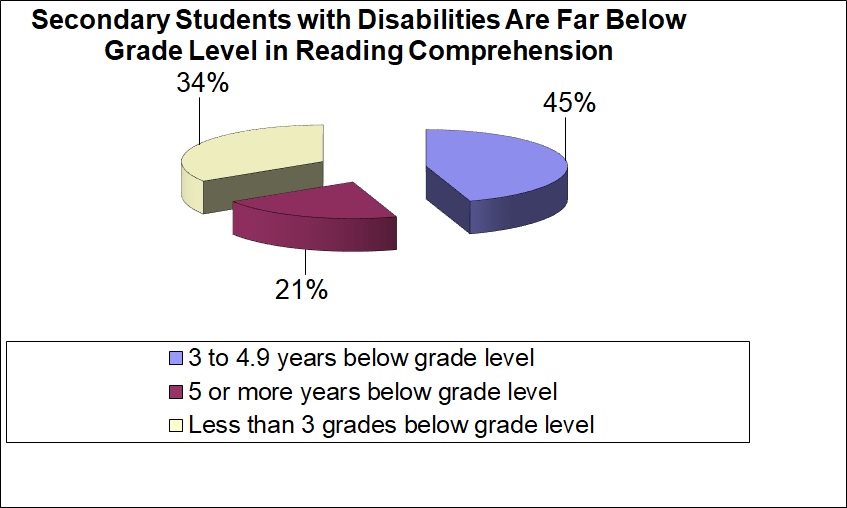
- Improving reading comprehension by 2, 3 or even 4 grade levels within 4 to 6 months is often possible. A few words of caution:
- Such results take both a commitment to training and follow-up
- Students with lower IQs and/or significant impairments may not make these gains
- Cooperation and collaboration help
Waiting is Not an Option
The next critical step is to:
Assess for Success. This would include assessing for:
- How your child learns best
- Executive function issues (e.g. working memory, processing speed and attention)
- Auditory and visual processing issues.
- Dyslexia or another learning disability
- Your child’s present level of reading fluency and reading comprehension
If the assessment shows considerable upside potential, we recommend you adopt the
Mindset that Success is the Only Option. Then you consider
- Enrolling the services of the right professional for your child and you. Ideally, you want to work with professionals who will:
- Leverage your child’s strengths
- Address their challenges
- Boost their confidence and resilience
- Help you to be the coach and advocate your child needs
- Produce excellent results within months
If you would like to discuss how to put your child on their
Pathway to Success, call us at 561-361-7495
Feel free to share with others, who have a smart struggling child with significant upside potential.
Note, next week we will have our second article on Helping Your Bright Right Brain Kinesthetic Learner succeed in 4th grade and above. That article will focus on Assessing for Success.

For the bright right brain kinesthetic learner, math word problems have become a major issue. While reading scores dropped after the pandemic, math scores dropped even further. As shown below, the percent of 4th and 8th graders meeting grade level standards on the NAEP (National Assessment of Educational Progress), dropped by 7 and 8 points respectively. The bad news is that problems with math word problems rarely self-correct.
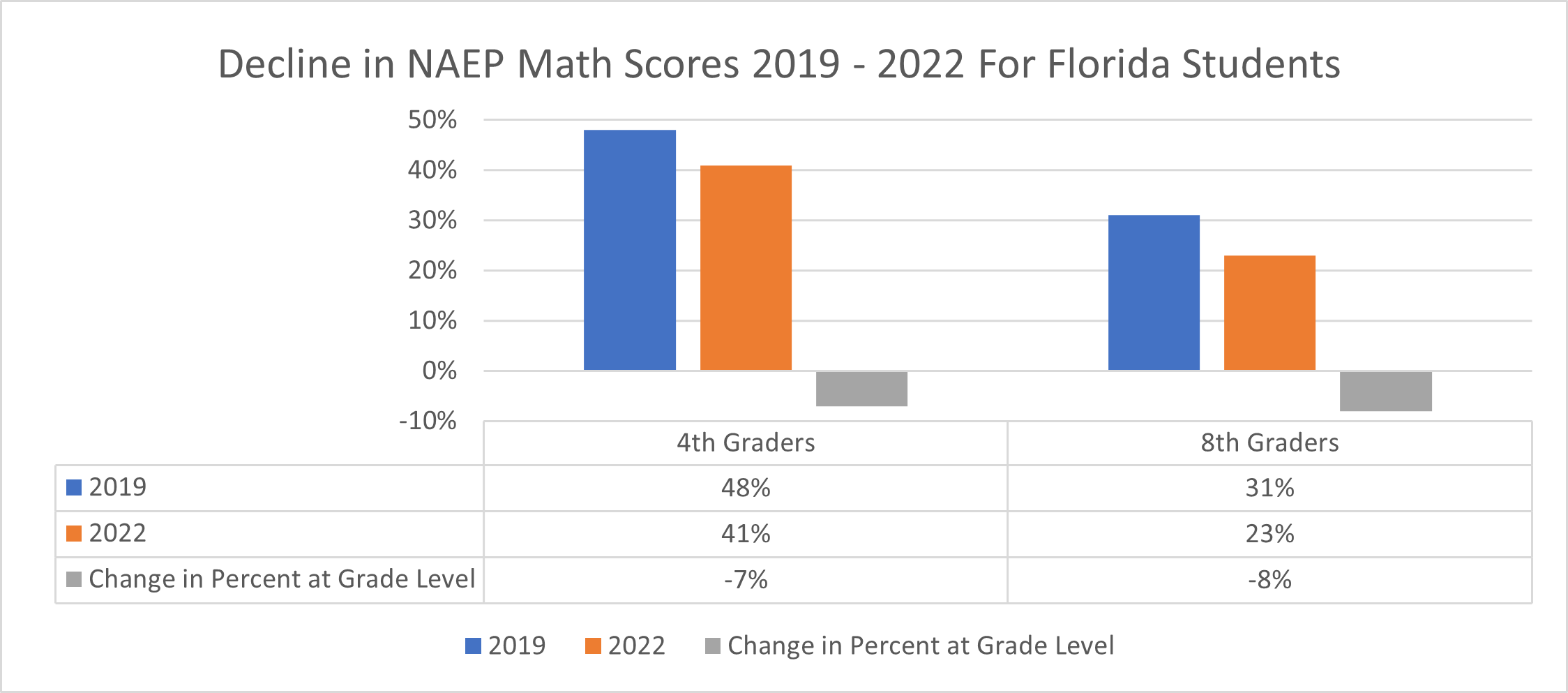
The good news is that we have over 25 years of experience helping students to make dramatic gains in their math performance. This includes:
- A student who had been to 17 other math tutors and was operating at the1st percentile in math. We were able to get her to the 47th percentile
- A smart 4th grader, who we were able to get from the 48th to the 98th percentile
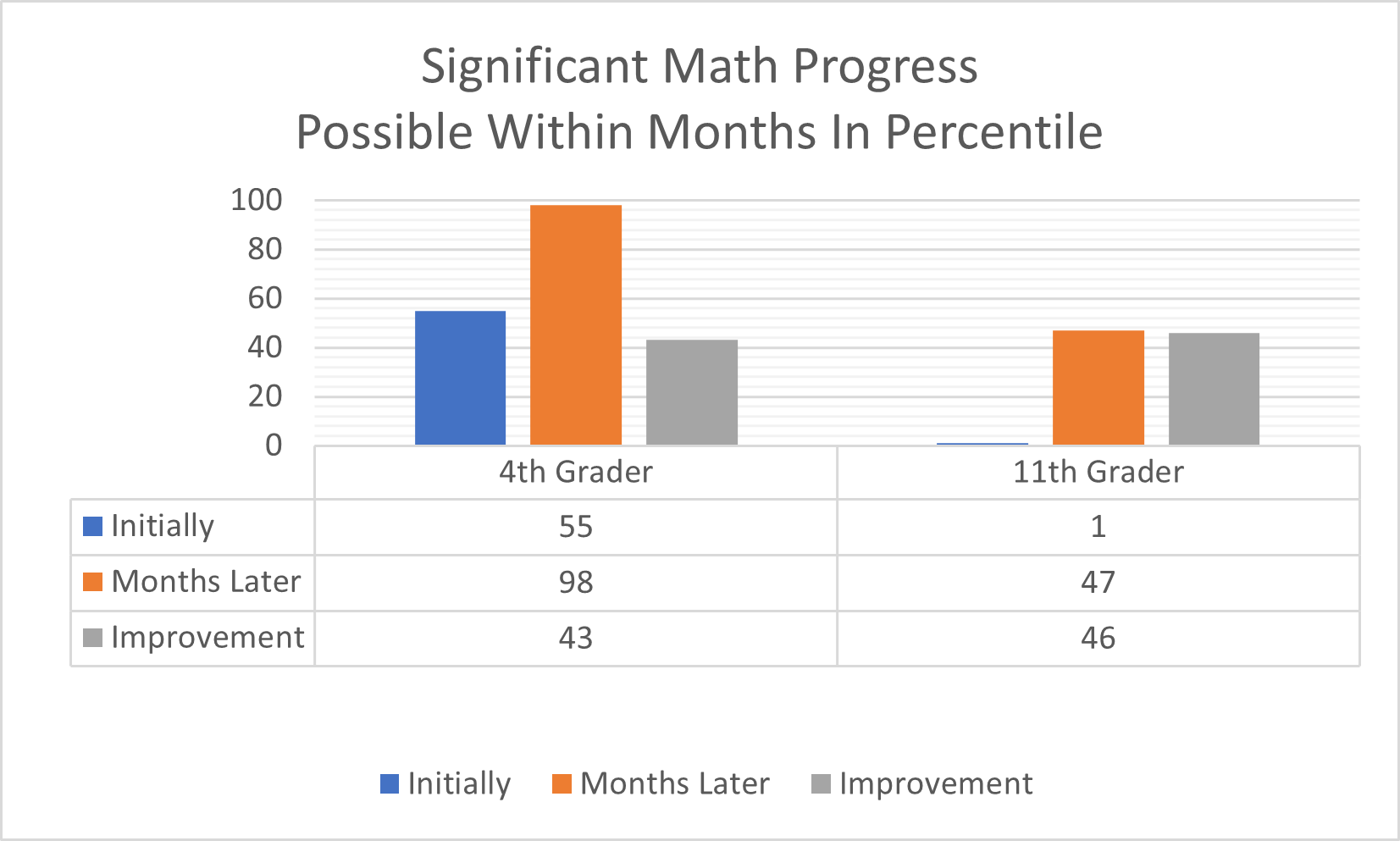
- Many students who were getting Cs, Ds and Fs, who went to As and Bs within months
If your child is experiencing difficulties with math word problems and you want to discuss what can be done,
Call us at 561-361-7495 or
Click here to schedule a Math Stress to Success Conversation
The Bright Right Brain Kinesthetic Learner may do well in the lower grades in math, but …
When math shifts in third and fourth grades to math word problems, virtually all our students have problems. This is often the result of many challenges, including:

Learning differences, visual processing issues and/or executive function issues are the multiple challenges that make math problems so difficult, and why remediation must address the relevant issues.
- The bright right brain kinesthetic learner learns differently than the logical, sequential and auditory approach that schools may use. They often have problems recognizing words, with the vocabulary and with the way the problems are worded. The right brain kinesthetic learner often does not learn how to leverage their visualization skills to understand and solve the problems.
- Visual processing issues are both common with the right brain kinesthetic learner and visual processing issues result in:
-
- Number reversals
- Not lining up the numbers correctly
- Missing signs – especially negative and division signs
- Making careless mistakes
- Executive function challenges may cause:
- Problems remembering math facts and the order of operation
- Losing focus when doing homework, during class when they are lost and during tests
- Difficulty finishing tests on time — the right brain kinesthetic learner
- Anxiety and frustration with math. We have heard too many students in the last year say, “I hate Math”.
For Bright Right Brain Kinesthetic Learners Struggling with Math Word Problems:
We Assess for Success looking
- How your child learns best
- Whether he or she has a visual processing issue
- Whether there is an attention, working memory and/or processing speed issues
We offer an Integrated, Engaging and Effective Program that often results in significant gains within months, especially for the bright right brain kinesthetic learner.
If your child is experiencing difficulties with math word problems and you want to discuss what can be done,
Call us at 561-361-7495 or
Click here to schedule a Math Stress to Success Conversation

 The right assessment can identify specific strengths and cognitive weaknesses
The right assessment can identify specific strengths and cognitive weaknesses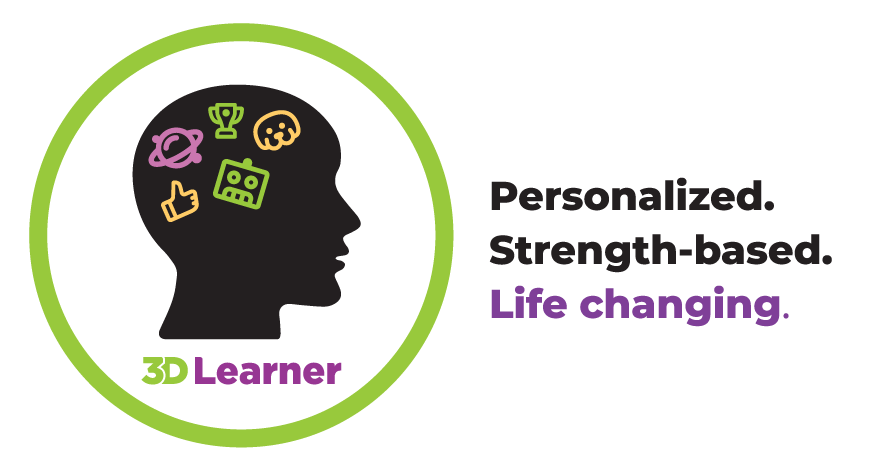
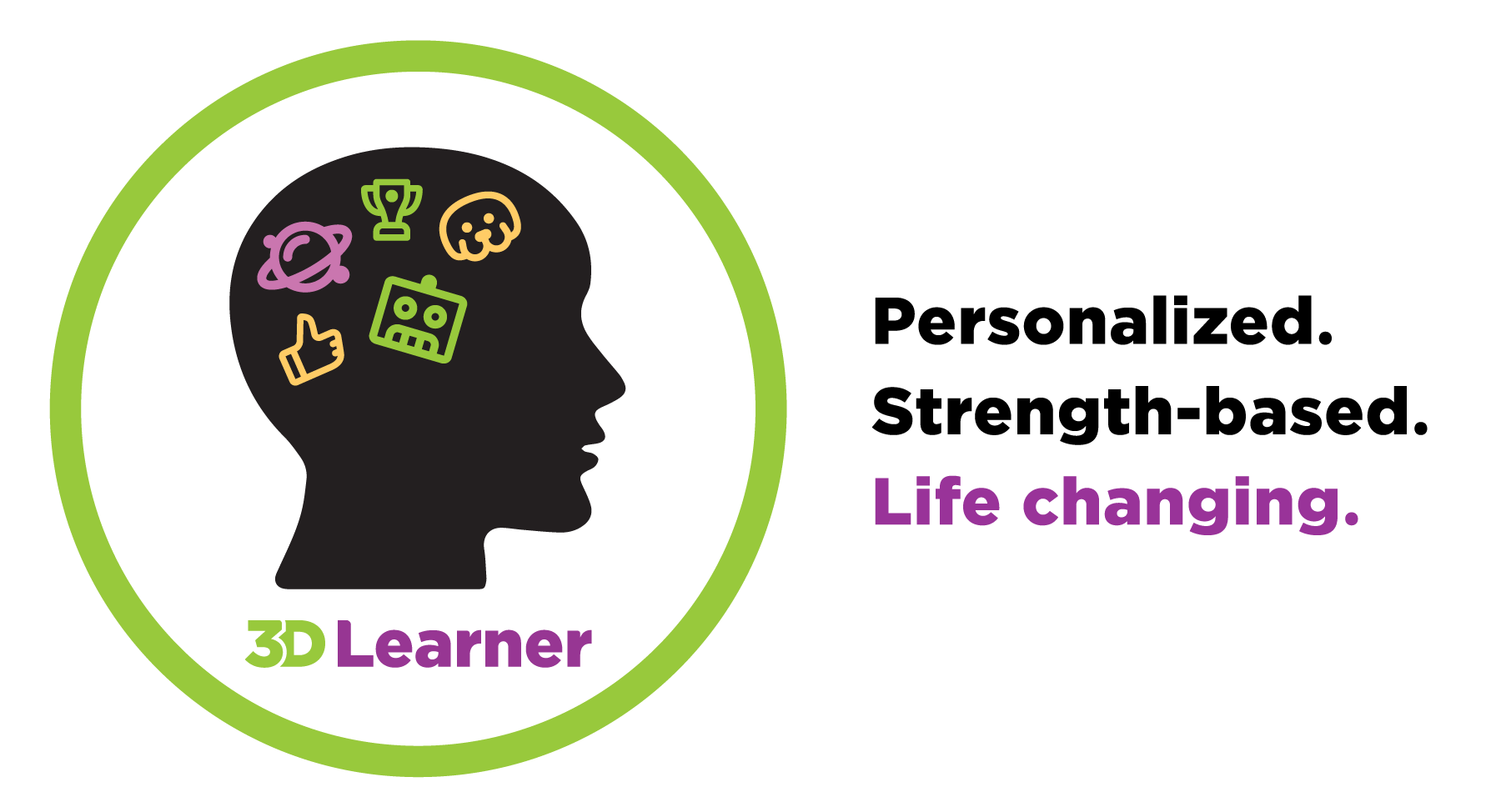







Recent Comments